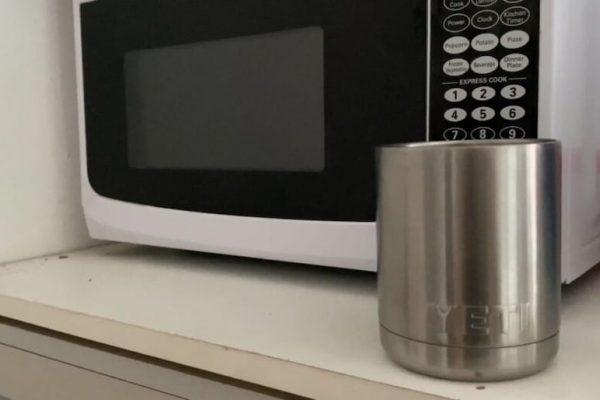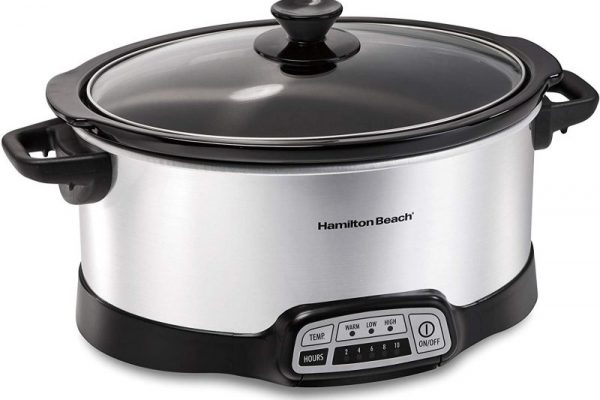Cooking with silicone pans is one of the most amazing things you can do. All of your favorite baked goods will bake evenly because they are non-stick, flexible, and simple to clean.
So, can you put silicone in the oven?
You put silicone in the oven. And in case you were wondering, the majority of silicone baking pans can withstand oven temperatures of up to 428°F (some even 450°F).
Continue reading.
Table of Contents
- Can Silicone Go in the Oven?
- In The Oven, Are Silicone Handles Safe?
- Does Baking In Silicone Bakeware Require More Time?
- The Toaster Oven Is Safe For Silicone.
- In The Oven, Does Silicone Melt?
- Does Silicone Melt In The Microwave?
- Can You Put Silicone Directly On An Oven Rack?
- Is All Silicone Heat Resistant?
- Plastic Vs. Silicon
- Is Silicon Toxic?
- Placing Silicone Bakeware On The Oven Rack
- The Basics Of Silicone Bakeware
- What To Be Wary Of
- Use Silicone Bakeware In The Oven
- The Benefits Of Using Silicone Bakeware
- The Cons Of Using Silicone Bakeware
- Is It Safe To Use Silicone Bakeware On An Oven Rack?
- Conclusion
Can Silicone Go in the Oven?
Baking pans made of silicone are intended for use in the oven.
In fact, almost every silicone baking pan can handle temperatures up to 428F (220C). This number seems to be the “golden number” for most silicone baking pans. The majority of silicone baking pans can, however, withstand temperatures of 450F without any issues.
However, before putting your silicone cookware in the oven, it is crucial to check it again. You want to avoid damaging your silicone pan at all costs.
In The Oven, Are Silicone Handles Safe?
Since silicone handles have the same construction as silicone bakeware, they are safe going into the oven.
Although, it’s necessary to ask the question – why? Silicone handles are more commonly used to pull items out of the oven. They shouldn’t be left inside the range for a significant reason.
Does Baking In Silicone Bakeware Require More Time?
Silicone bakeware doesn’t take longer to bake than regular bakeware, so you won’t need to adjust the time for your baked goods.
The Toaster Oven Is Safe For Silicone.
In the toaster oven, silicone is also perfectly acceptable. Ovens and toaster ovens are used in virtually the same ways. Size is the only notable variation.
There is no reason why the same guidelines cannot be used for silicone bakeware when used in a toaster oven, which has a temperature range of 428F or 450F.
In The Oven, Does Silicone Melt?
Until temperatures reach 500F (260C), silicone will not melt in an oven. Given that most baked goods don’t require such high temperatures, this is good news for bakers.
Unfortunately, you will have to forgo the silicone and choose something much more durable if your recipe calls for temperatures above 500F. You will have the most success with stainless steel, cast iron, and carbon steel.
Does Silicone Melt In The Microwave?
Silicone will not melt in the microwave, either. Using silicone baking pans has many advantages, one of which is this. Almost any application, including the microwave, oven, dishwasher, and freezer, can use them due to their capacity to withstand extreme temperatures.
Can You Put Silicone Directly On An Oven Rack?
Silicone baking pans can be placed directly on oven racks, even though it might not seem like it. Remember that silicone can withstand temperatures of up to 500°F, so there is no reason to believe that the metal racks inside would cause it to fail.
The majority of people won’t, of course, choose to put silicone baking pans on oven racks at all. Most bakers place a baking sheet underneath because of their flexibility for added stability when placing in and out of the oven. (Otherwise, you can have the batter that I spilled; no thanks!).

Is All Silicone Heat Resistant?
Since silicone has a low thermal conductivity and a high heat resistance, it can all withstand heat. The confusion arises largely because not all rubbers can withstand extremely high temperatures.
Silicone rubber baking pans can be used in temperatures up to the specified limit, usually 428°F or 450°F.
Plastic Vs. Silicon
BPA, also known as bisphenol A, is an additive used in the manufacture of plastic. It is in charge of keeping materials made of petroleum flexible for a very long time. However, since silicone is unrelated to petroleum, there should be no problems with BPA when using it.
Silicone is a synthetic rubber that is naturally flexible and has a greater capacity to withstand heat than plastic. Silicone is used to make bakeware and cookware.
Since silicone is naturally flexible, plasticizers are not needed to create the basic components used to create silicone bakeware.
Is Silicon Toxic?
Over the years, silicone has become widely known for its use in breast implants and other applications involving plastic surgery. And people have considered this silicone use to be risky due to the general perception of risk and reliability. That lack of safety, however, might only be true for silicone implants that have been done haphazardly and are liquid in nature. Silicon designed for use in kitchens is cured, fixed, and stable.
This is not to imply that silicone kitchen utensils are faultless and flawless.
Here are some common problems with silicon bakewares that you should note:
- When placing their pans on the rack, some customers complain that silicone bakeware flexes excessively in their ovens, spilling their batter or baking ingredients. These spills may result in a smokey oven, a mess, or even a danger. This is why you should probably use a metal tray before putting your silicon bakeware in the oven; doing so will stop the bakeware from stretching and leaking uncooked batter.
- Make sure your cookie sheet or something similar is spread underneath them because silicone is difficult to move once it’s hot. This is especially important if you’re used to turning your baked goods halfway through the process.
- It has also frequently been reported that if silicon bakeware is not properly cleaned, a sticky film can form over time, which may affect its non-sticky properties.
Placing Silicone Bakeware On The Oven Rack
As long as the silicone bakeware is of a high caliber and has received FDA approval, it can be placed directly onto the oven rack. The silicone bakeware needs to withstand high temperatures and be of food-grade quality.
Good-quality silicone bakeware can withstand temperatures up to 500°F, which should cover most of your baking needs in the kitchen.
Small silicone bakeware poses the only obstacle to placement on the oven rack.
Small molds should be placed on a baking tray before being placed on the oven rack to reduce mess. Small molds run the risk of spilling or slipping through the rack.
The Basics Of Silicone Bakeware
For a variety of reasons, silicone bakeware is a great choice. There are numerous silicone bakeware options available in a wide variety of colors, shapes, and designs.
Other than this, silicone bakeware is also non-toxic and is resistant to stains and odors. With little wear and tear, this makes it perfect for reusing repeatedly.
The other big benefit to using silicone bakeware is that it can withstand heat up to 500°F, so it can be used for most baking purposes, and it is completely safe to use in the oven.
Additionally, silicone bakeware is non-stick, which makes it incredibly simple to use repeatedly and makes it simple to remove baked goods from the silicone bakeware.
Since most silicone bakeware options are inexpensive and widely accessible, you could amass a collection of various bakeware shapes and sizes over time to suit any recipe!
In addition to using silicone bakeware in the oven, you can also use it to serve food at events and when you have guests over.
What To Be Wary Of
A certain amount of low-quality silicone bakeware will inevitably be sold because it is becoming such a popular product on the market.
You really need to be careful to not purchase low-quality silicone bakeware goods, as they might have impurities or filler materials that are not safe to cook with.
These may not be very heat-resistant, which increases the risk of melting them in the oven.
By bending and twisting it, you can often distinguish between high-quality and low-quality silicone bakeware. It is most likely of low quality if a white color emerges.
Use Silicone Bakeware In The Oven
Silicone bakeware can be used in the oven, directly on the rack, in temperatures up to 500°F.
The majority of silicone bakeware products can withstand temperatures up to this maximum, but it is always a good idea to double-check this information on the product packaging.
When placing silicone bakeware in the oven, you can apply a nonstick spray to the surface if you wanted to, but this is not necessarily needed as silicone is non-stick as is, and you shouldn’t need too much extra help.
Although silicone bakeware can be placed directly on the oven rack, many people prefer to place it on a baking sheet first before putting it in the oven.
This has more to do with silicone’s flexibility and lack of stability than it does with silicone’s poor heat resistance.
Once filled with batter or your food needing to be baked, there is a higher chance of it spilling when you place it in the oven, or try to remove it (as it might be hot)
Due to the ease and stability of moving the metal baking sheet in and out of the oven, as well as the decreased risk of spills and mess, people do prefer to place the silicone bakeware on it.
The Benefits Of Using Silicone Bakeware
The use of silicone bakeware is growing in acceptance as more people become aware of its advantages.
Here are a few of the best advantages of using silicone bakeware if you’re not sure.
Long-lasting
Silicone bakeware is long-lasting and will last for years in the kitchen, while still keeping its color and shape after extended use.
You can use it for a long time without having to frequently replace it because it will remain non-stick for many years.
Everything-safe
Everything is generally safe in silicone bakeware. It can be placed in the fridge, the freezer, the microwave, and the oven.
The versatility of silicone bakeware is further increased by its ability to withstand both high and low temperatures.
Non-stick
The fact that silicone bakeware is non-stick is one of its best qualities; once your cake has finished baking, you won’t have to struggle with the bakeware in order to remove it.
The non-stick properties of silicone do not fade and it is something that you can enjoy for years.
If necessary, you can use non-stick spray to coat the silicone bakeware’s surface, but it is not required.
No Staining
Silicone bakeware does not stain or hold onto odors, which means that you can use it for sweet and savory goods, and with brightly colored batter too, without worrying about it ruining the bakeware.
Through the years, the bakeware will maintain its vibrant colors and shapes well.
The Cons Of Using Silicone Bakeware
Silicone bakeware, like most things, has some drawbacks in addition to its advantages. You can determine whether the advantages are worthwhile for you by understanding the drawbacks.
Spills And Messes
As silicone bakeware is flexible, there can be spills and messes often if you are not careful.
Moving hot silicone bakeware that is filled with batter from the counter to the oven without spilling can be challenging.
Placing the silicone bakeware onto a baking sheet, which is easier to hold and transport, is the best way to avoid this.
Durability
Metal bakeware is more dependable and strong than silicone. A knife or sharp object can easily puncture silicone bakeware, especially if it is low-quality.
The silicone bakeware, however, should last for a very long time if you take good care of it.
Heat Resistance
Silicone bakeware is heat resistant and can be placed in the oven and on the oven rack, but only up to 500°F.
This is not overly restrictive and it does cover the majority of kitchen uses, but it does mean that any temperatures above this or direct flames could easily melt the silicone bakeware and ruin it.
Is It Safe To Use Silicone Bakeware On An Oven Rack?
Silicone bakeware can be placed directly onto the oven rack safely, as long as the temperature of the oven is not above the recommended temperature of the silicone bakeware.
The only reason to put silicone bakeware on a baking sheet is to give it more stability and to prevent spills and messes, which are easy to make with flexible silicone.
As long as the oven’s temperature is not too high, it is safe to place silicone bakeware directly on the oven rack.
Conclusion
Silicone bakeware can withstand an oven’s high temperature of up to 428 degrees Fahrenheit (220 degrees Celsius), so you can use it. Silicone can be used safely for everyday tasks as well as for baking. Food-grade silicone won’t deteriorate or contaminate food when exposed to high oven temperatures.
We appreciate your reading.



![Dutch Oven Vs French Oven: Which One Should You Get? [With Reviews]](https://www.searchforbuy.com/wp-content/uploads/2022/11/Dutch-Oven-Vs-French-Oven-Which-One-Should-You-Get-With-Reviews-600x400.jpg)